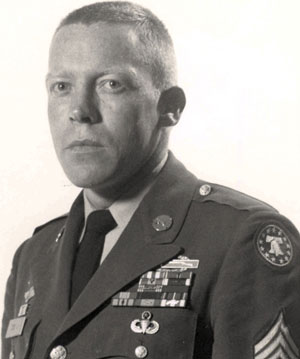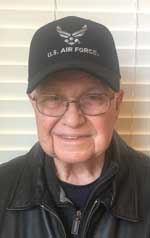
Joe Ronnie Hooper, US Army
Medal of Honor, Vietnam 1968
36 Medal of Honor Winners from 1861 to 2020
Several years ago, I was invited to give a presentation on my book on the Civil War—The Un-Civil War: Shattering the Historical Myths, published in 2011—to a group of the Sons of Confederate Veterans in Pickens, South Carolina. Pickens is a small town of about 3,400 population, but it is the county seat of Pickens County. Pickens County has a modest population of 131,000, and its largest town, Easley, has a modest but prosperous population of 23,000. As I walked into the public building where the meeting was to be held, I was astonished to see the photos of four Pickens County men who had been awarded the Congressional Medal of Honor:
Private Furman L Smith, US Army, KIA May 31, 1944, Italy, World War II.
PFC William A. McWhorter, US Army, KIA, December 5, 1944, Philippines, World War II.
PFC Charles H. Barker, US Army, Last seen June 4, 1953, fighting hand-to-hand, Pork Chop Hill, Korean War.
Lance Corporal James Donnie Howe, USMC, KIA May 6, 1970, Vietnam War.
Pickens County is not a large county, but it is reputed to have more Congressional Medal of Honor winners than any county in the United States. Depending on more exact biographic detail, two larger South Carolina counties, Charleston and Greenville counties, may rival Pickens County.
There have been 3,527 Medal of Honor (MoH) winners since its origin during the Civil War in 1861. The largest number, over 1,500, were awarded during the Civil War. These were, of course, only for Union soldiers, so there was only one thought to be born in South Carolina among them.
Since the Civil War, 126 Medals of Honor were awarded during World War I, 472 in World War II, 146, during the Korean War, 261 during the Vietnam War, which was by far the longest war, 6 in the Iraq War, and 18 in Afghanistan, totaling 1,029. Thirty of these were from South Carolina. With only 1.55 percent of the U.S. population, South Carolina has 2.92 percent of the Medals of Honor in WW1, WW2, Korea, Vietnam, Iraq, and Afghanistan. So South Carolina has 188 percent of its expected proportion of Medals of Honor in these conflicts, almost double expectations.
Six South Carolinians received the Medal of Honor in other conflicts. Robert Blake, an African American in the Union Navy, is claimed by both South Carolina and Virginia. Close to 20 percent of seamen in the Confederate Navy were African Americans. Edward Floyd, born in Ireland, received his medal from a 1905 naval action and is buried in Charleston. Ernest Garlington received his Medal of Honor for actions at Wounded Knee, South Dakota, in 1890. John T. Kennedy received his for actions in 1909 during the Philippine Insurrection. Donald Truesdell, USMC, was awarded the Medal for the Second Nicaraguan campaign in 1932. George H. Wheeler, USN, received the Medal for action in Chile in 1909. These last five indicate South Carolinians may have been especially prone to military service from 1890 to 1914.
U.S. Armed Forces recruiting and retention statistics have for a long time shown that Southerners are disproportionally inclined to military service. In 2017, “Southern” states made up 33 percent of the population but furnished 41 percent of recruits. Two states that are not counted as Southern states in the survey, Missouri and Oklahoma, also have substantial Southern cultural regions and influences and contribute disproportionately to Armed Forces recruitment.
However, Southern contribution to Armed Forces recruitment and retention is likely to decrease in the future. Recent Biden Administration Defense Department human resources and social environment policies are dramatically changing in a direction unlikely to attract and retain highly qualified and motivated traditional patriots. Unless our leaders come to their senses, recruiting, training, quality, and retention problems may seriously undermine our national security and foreign policy effectiveness.
The official record of Medal of Honor winners is usually credited to the state where they enlisted, which can be misleading. Of the 36 MoH winners below, 32 were known to be born in South Carolina, Four were residents of South Carolina born in Ireland, Mississippi, Massachusetts, and possibly Virginia. A brief biography and citation of the heroism of those known or thought to be born in South Carolina may be found online authored by Braley Dodson, wbtw.com, November 12, 2021. Here are the 36 Medal of Honor recipients generally claimed by South Carolina:
Webster Anderson, USA, Winnsboro, Vietnam.
Thomas E. Atkins, USA, Campobello (Spartanburg Co.), WW2.
Charles H. Barker, USA, Pickens County, Korea.
Robert Blake, USN (Union Navy), born SC, also claimed by VA, Union Civil War,
Blake was the second African American to be awarded the MoH.
William Kyle Carpenter, USMC, Jackson, MS. Enlisted SC, Afghanistan.
Christopher Andrew Celiz, USA, Summerville, Afghanistan.
James C. Dozier, USA, Columbia, WW1.
Middleton Stuart Elliott, USN, Beauford, WW1.
Edward Floyd, USN, Ireland, Action 1905, buried Charleston, SC.
Gary E. Foster, USA, Spartanburg, WW1.
Ernest A. Garlington, USA, Newberry Hill, Wounded Knee, SD, Indian campaign, 1890.
Thomas Lee Hall, USA, Fort Mill, WW1.
James D. Heriot, USA, Providence, WW1.
Richmond H. Hilton, USA, Westville (Kershaw Co.), WW1.
Joe R. Hooper, USA, Piedmont, Greenville/Anderson counties, Vietnam.
James D. Howe, USMC, Pickens County, Vietnam.
Ralph H. Johnson, USMC, Charleston, Vietnam.
John T. Kennedy, USA, Hendersonville (Colleton Co.), Philippine Insurrection, 1909.
Robert S. Kennemore, USMC, Greenville, Korea.
Noah O. Knight, USA, Chesterfield County, Korea.
George L. Mabry, USA, Sumter, WW2.
John James McGinty iii, USMC, born Boston MA, raised Kentucky, buried SC, Vietnam.
William A. McWhorter, USA, Pickens County, WW2.
William A. Moffett, USN, Charleston, WW1.
Robert Allen Owens, USMC, Greenville, WW2.
Thomas Patrick Payne, USA, Kershaw County, Iraq.
Furman L. Smith, USA, Pickens County, WW2.
Freddie Stowers, USA, Sandy Springs, WW1.
Daniel Augustus Joseph Sullivan, USN, Charleston, WW1.
Michael Edwin Thornton, USN, Greenville, Vietnam.
Donald Leroy Truesdell, USMC, Lugoff (Kershaw Co.), 2nd Nicaraguan campaign, 1932.
John C. Villepigue, USA, Camden, WW1.
Lewis G. Watkins, USMC, Seneca, Korea.
George H. Wheeler, USN, Charleston, in Chile 1909.
Charles Q. Williams, USA, Charleston, Vietnam.
James E. Williams, USN, Rock Hill, Vietnam.
Perhaps one of the most spectacular citations for heroism in the Vietnam War, reminiscent of Audie Murphy (Texas) in World War II and Alvin York (Tennessee) in World War I, was that of Joe Ronnie Hooper, who was born in Piedmont, South Carolina, which is in both Greenville and Anderson counties. The action for which his Congressional Medal of Honor was awarded took place on February 21, 1968, near Hue, in the Republic of South Vietnam. This action occurred during North Vietnam’s Tet Offensive. Hooper was serving in Company D of the 1st Airborne Battalion, of the 506th Infantry Regiment of the 101st Airborne Division. The Citation follows:
“For conspicuous gallantry and intrepidity in action at the risk of his life above and beyond the call of duty. S/Sgt. (then Sgt.) Hooper, U.S. Army, distinguished himself while serving as squad leader with Company D. Company D was assaulting a heavily defended enemy position along a riverbank when it encountered a withering hail of fire from rockets, machine guns, and automatic weapons. S/Sgt. Hooper rallied several men and stormed across the river, overrunning several bunkers on the opposite shore. Thus inspired, the rest of the company moved to the attack. With utter disregard for his own safety, he moved out under the intense fire again and pulled back the wounded, moving them to safety. During this act S/Sgt. Hooper was seriously wounded, but he refused medical aid and returned to his men. With the relentless enemy fire disrupting the attack, he single-handedly stormed three enemy bunkers, destroying them with hand grenades and rifle fire, and shot two enemy soldiers who had attacked and wounded the chaplain. Leading his men forward in a sweep of the area, S/Sgt. Hooper destroyed three buildings housing enemy riflemen. At this point he was attacked by a North Vietnamese officer whom he fatally wounded with his bayonet. Finding his men under heavy fire from a house to the front, he proceeded alone to the building, killing its occupants with rifle fire and grenades. By now his initial body wound had been compounded by grenade fragments, yet despite the multiple wounds and loss of blood, he continued to lead his men against the intense enemy fire. As his squad reached the final line of enemy resistance, it received devastating fire from four bunkers in line on its left flank. S/Sgt. Hooper gathered several hand grenades and raced down a small trench which ran the length of the bunker line, tossing grenades into each bunker as he passed by, killing all but two of the occupants. With these positions destroyed, he concentrated on the last bunkers facing his men, destroying the first with an incendiary grenade and neutralizing two more by rifle fire. He then raced across an open field, still under enemy fire, to rescue a wounded man who was trapped in a trench. Upon reaching the man, he was faced by an armed enemy soldier whom he killed with a pistol. Moving his comrade to safety and returning to his men, he neutralized the final pocket of enemy resistance by fatally wounding three North Vietnamese officers with rifle fire. S/Sgt. Hooper then established a final line and reorganized his men, not accepting treatment until this was accomplished and not consenting to evacuation until the following morning. His supreme valor, inspiring leadership, and heroic self-sacrifice were directly responsible for the company's success and provided a lasting example in personal courage for every man on the field. S/Sgt. Hooper's actions were in keeping with the highest traditions of the military service and reflect great credit upon himself and the U.S. Army.”
In Hooper’s extraordinarily courageous actions, he managed to rescue and save the lives of several of his men and comrades and kill 22 North Vietnamese soldiers. For his Vietnam service, Hooper was also awarded two Silver Stars, six Bronze Stars, and eight Purple Hearts. He is credited with killing a total of 115 enemy soldiers in ground combat. In this regard, he actually eclipsed the record of Audie Murphy and Alvin York. Hooper was promoted through the ranks eventually holding the rank of Captain. He died of a cerebral hemorrhage on May 6, 1979, in Louisville, Kentucky, at the age of 40. He is buried at Arlington National Cemetery, just 60 feet from his boyhood hero, Audie Murphy.
Let us remember that there are countless Americans whose valor was either not seen or not recorded but is known only to God. Let us be thankful to all generations of those who have served or are now serving. This should include honoring those on both sides of the Civil War. An unforgiving spirit is incompatible with righteous government and is the ruin of nations and peoples.
Thank you, South Carolina, for your brave heritage.









 Mike Scruggs is the author of two books: The Un-Civil War: Shattering the Historical Myths; and Lessons from the Vietnam War: Truths the Media Never Told You, and over 600 articles on military history, national security, intelligent design, genealogical genetics, immigration, current political affairs, Islam, and the Middle East.
Mike Scruggs is the author of two books: The Un-Civil War: Shattering the Historical Myths; and Lessons from the Vietnam War: Truths the Media Never Told You, and over 600 articles on military history, national security, intelligent design, genealogical genetics, immigration, current political affairs, Islam, and the Middle East. 


